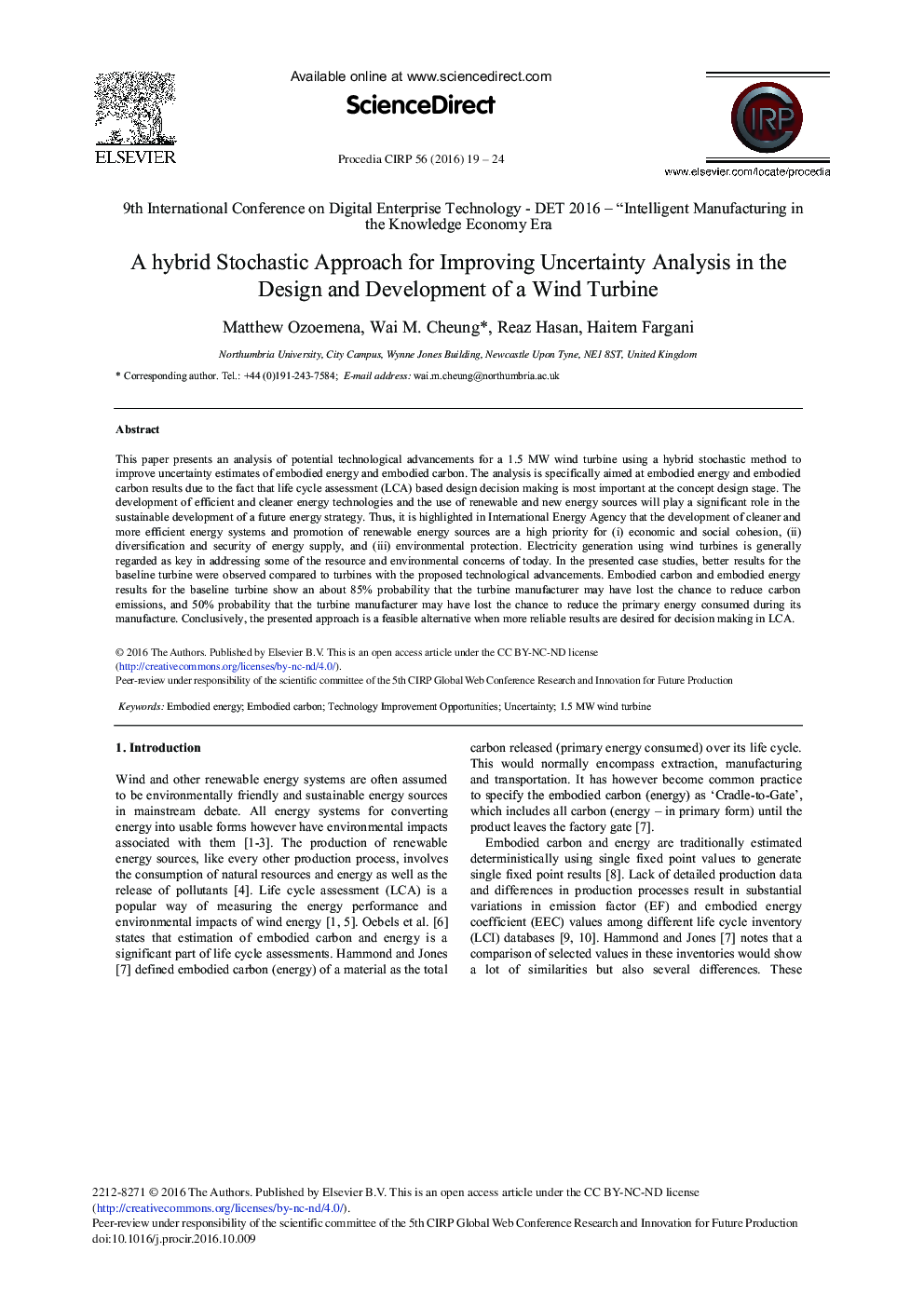| Article ID | Journal | Published Year | Pages | File Type |
|---|---|---|---|---|
| 5469685 | Procedia CIRP | 2016 | 6 Pages |
Abstract
This paper presents an analysis of potential technological advancements for a 1.5 MW wind turbine using a hybrid stochastic method to improve uncertainty estimates of embodied energy and embodied carbon. The analysis is specifically aimed at embodied energy and embodied carbon results due to the fact that life cycle assessment (LCA) based design decision making is most important at the concept design stage. The development of efficient and cleaner energy technologies and the use of renewable and new energy sources will play a significant role in the sustainable development of a future energy strategy. Thus, it is highlighted in International Energy Agency that the development of cleaner and more efficient energy systems and promotion of renewable energy sources are a high priority for (i) economic and social cohesion, (ii) diversification and security of energy supply, and (iii) environmental protection. Electricity generation using wind turbines is generally regarded as key in addressing some of the resource and environmental concerns of today. In the presented case studies, better results for the baseline turbine were observed compared to turbines with the proposed technological advancements. Embodied carbon and embodied energy results for the baseline turbine show an about 85% probability that the turbine manufacturer may have lost the chance to reduce carbon emissions, and 50% probability that the turbine manufacturer may have lost the chance to reduce the primary energy consumed during its manufacture. Conclusively, the presented approach is a feasible alternative when more reliable results are desired for decision making in LCA.
Related Topics
Physical Sciences and Engineering
Engineering
Industrial and Manufacturing Engineering
Authors
Matthew Ozoemena, Wai M. Cheung, Reaz Hasan, Haitem Fargani,
